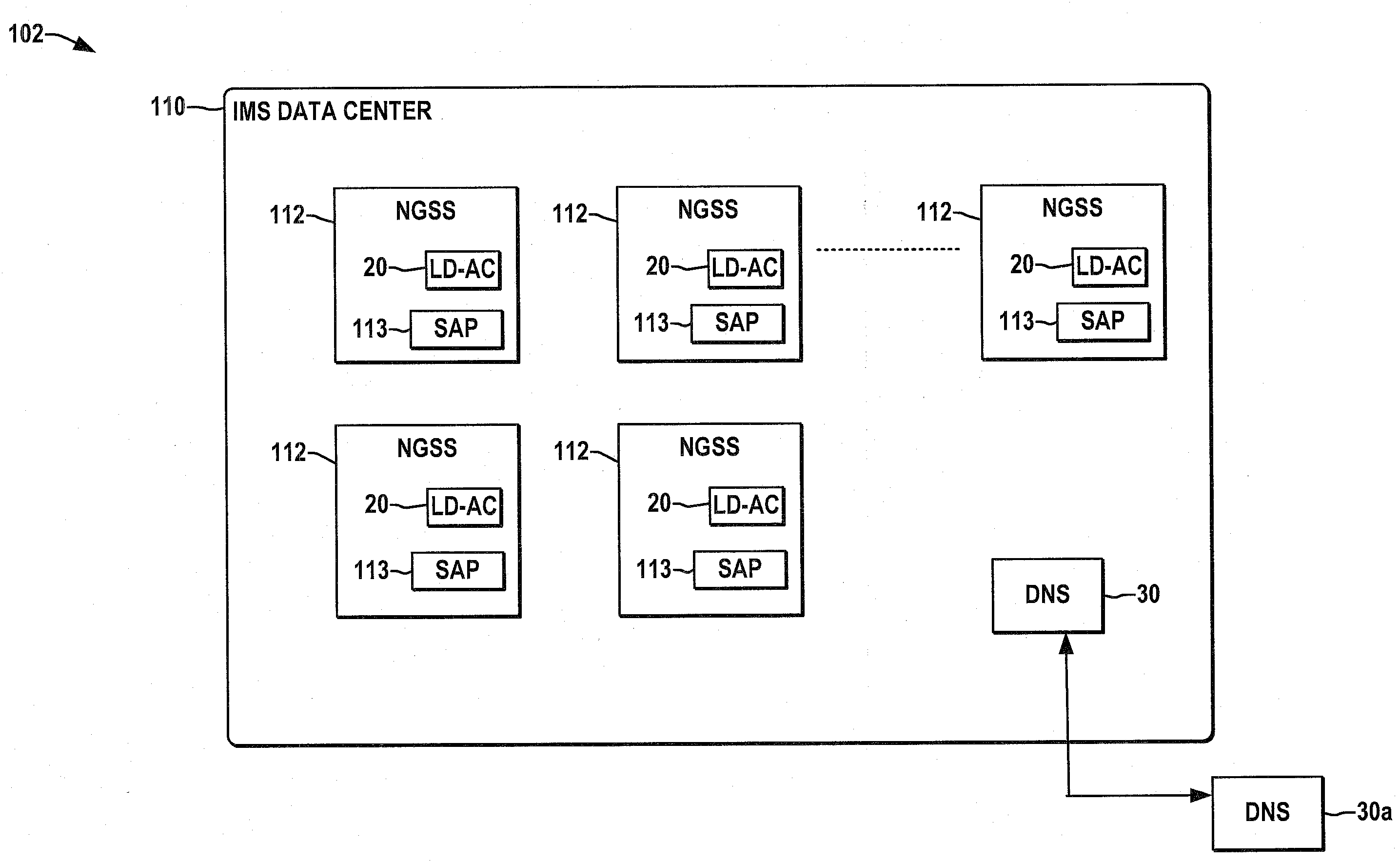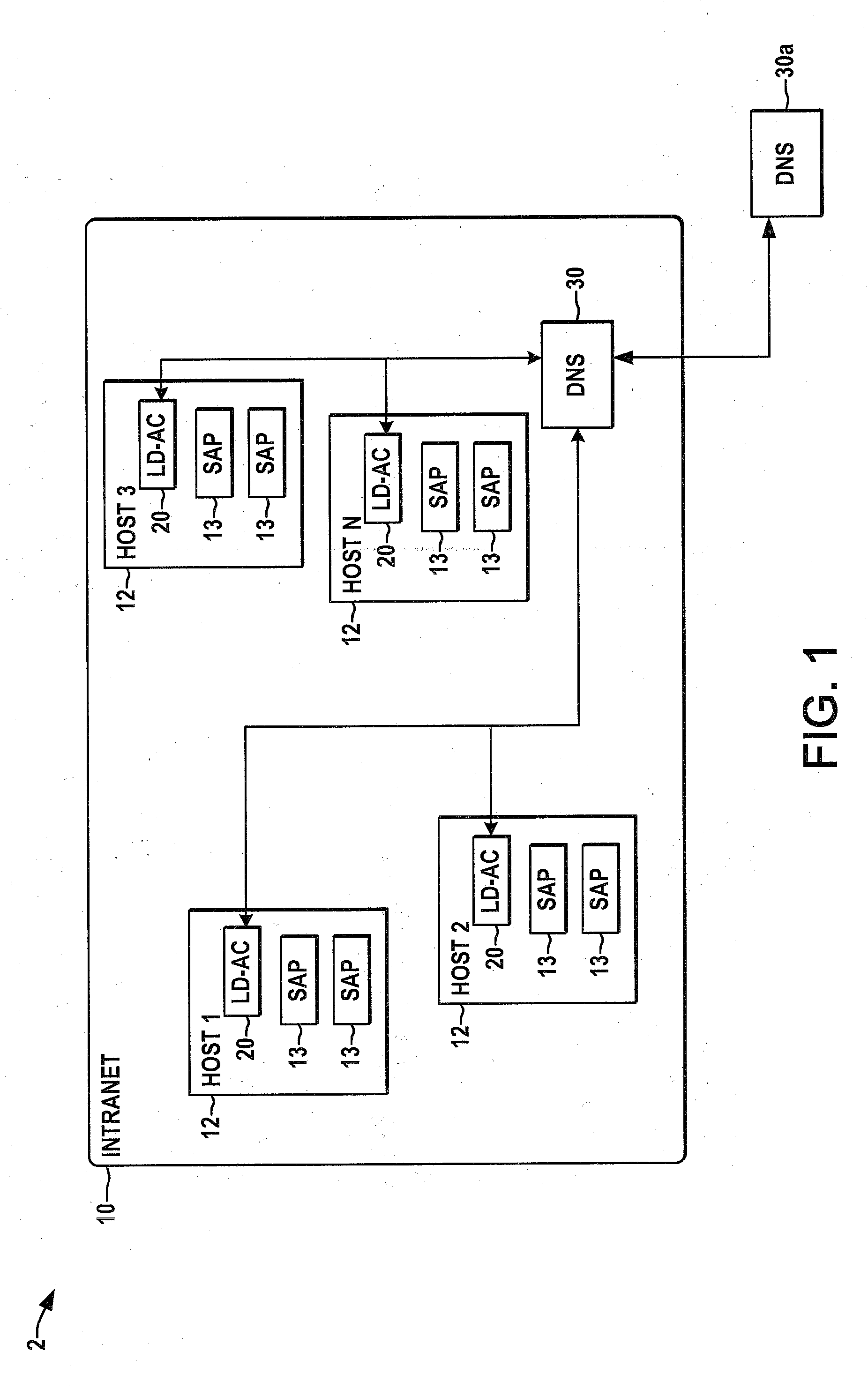Systems and methods for resolving resource names to IP addresses with load distribution and admission control
a resource name and resource technology, applied in the field of ip address resolution, can solve the problems of inability to reflect the actual availability of the identified peer processing node, the obtained data may be obsolete, and the status information is considerably delayed to the processing node, so as to achieve local resolution
- Summary
- Abstract
- Description
- Claims
- Application Information
AI Technical Summary
Benefits of technology
Problems solved by technology
Method used
Image
Examples
Embodiment Construction
[0018]Referring now to the figures, wherein the showings are for purposes of illustrating the exemplary embodiments only and not for purposes of limiting the claimed subject matter, FIG. 1 schematically illustrates a packet switched computing system or network 2 including a local intranet 10 into which the presently described embodiments may be incorporated or in which various aspects of the invention may be implemented. Several embodiments or implementations of the various aspects of the present invention are hereinafter illustrated and described in conjunction with the drawings, wherein like reference numerals are used to refer to like elements throughout and wherein the figures are not necessarily drawn to scale. The illustrated system 2 can be any type of computing environment, such as a multimedia system processing calls and other multimedia sessions and will be described with particular reference thereto, although various aspects of the invention are not limited to any particu...
PUM
 Login to View More
Login to View More Abstract
Description
Claims
Application Information
 Login to View More
Login to View More - R&D
- Intellectual Property
- Life Sciences
- Materials
- Tech Scout
- Unparalleled Data Quality
- Higher Quality Content
- 60% Fewer Hallucinations
Browse by: Latest US Patents, China's latest patents, Technical Efficacy Thesaurus, Application Domain, Technology Topic, Popular Technical Reports.
© 2025 PatSnap. All rights reserved.Legal|Privacy policy|Modern Slavery Act Transparency Statement|Sitemap|About US| Contact US: help@patsnap.com



